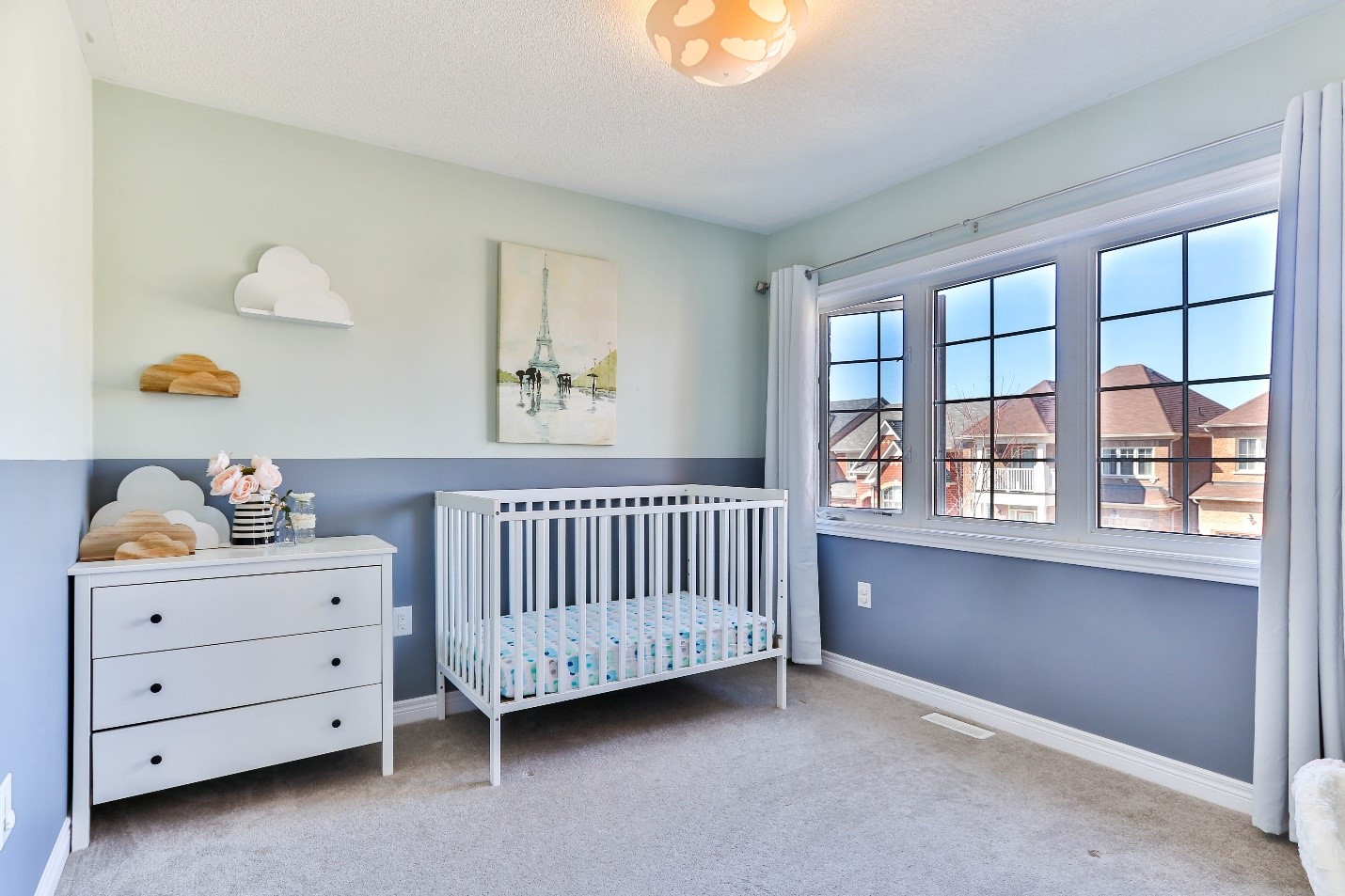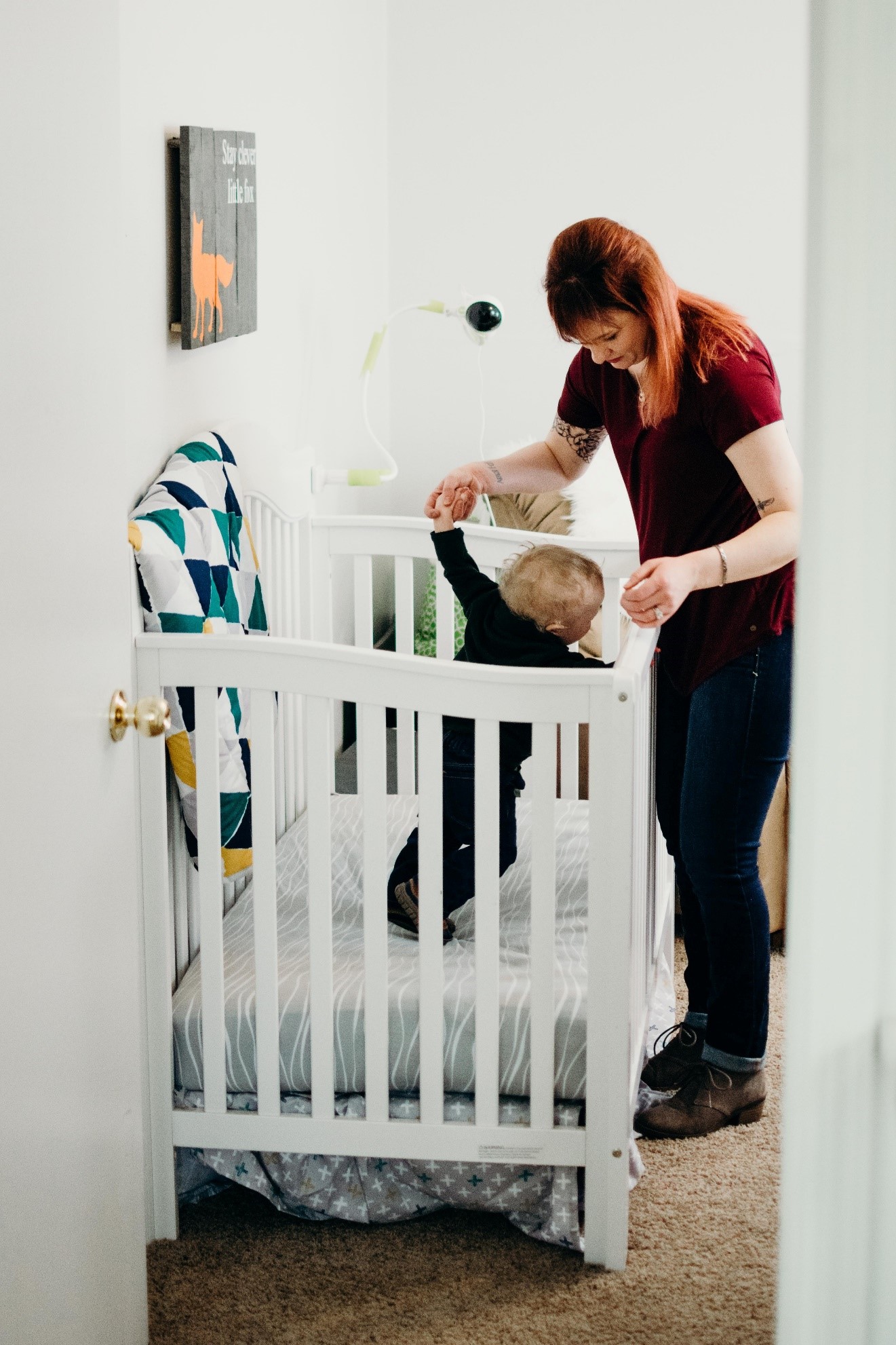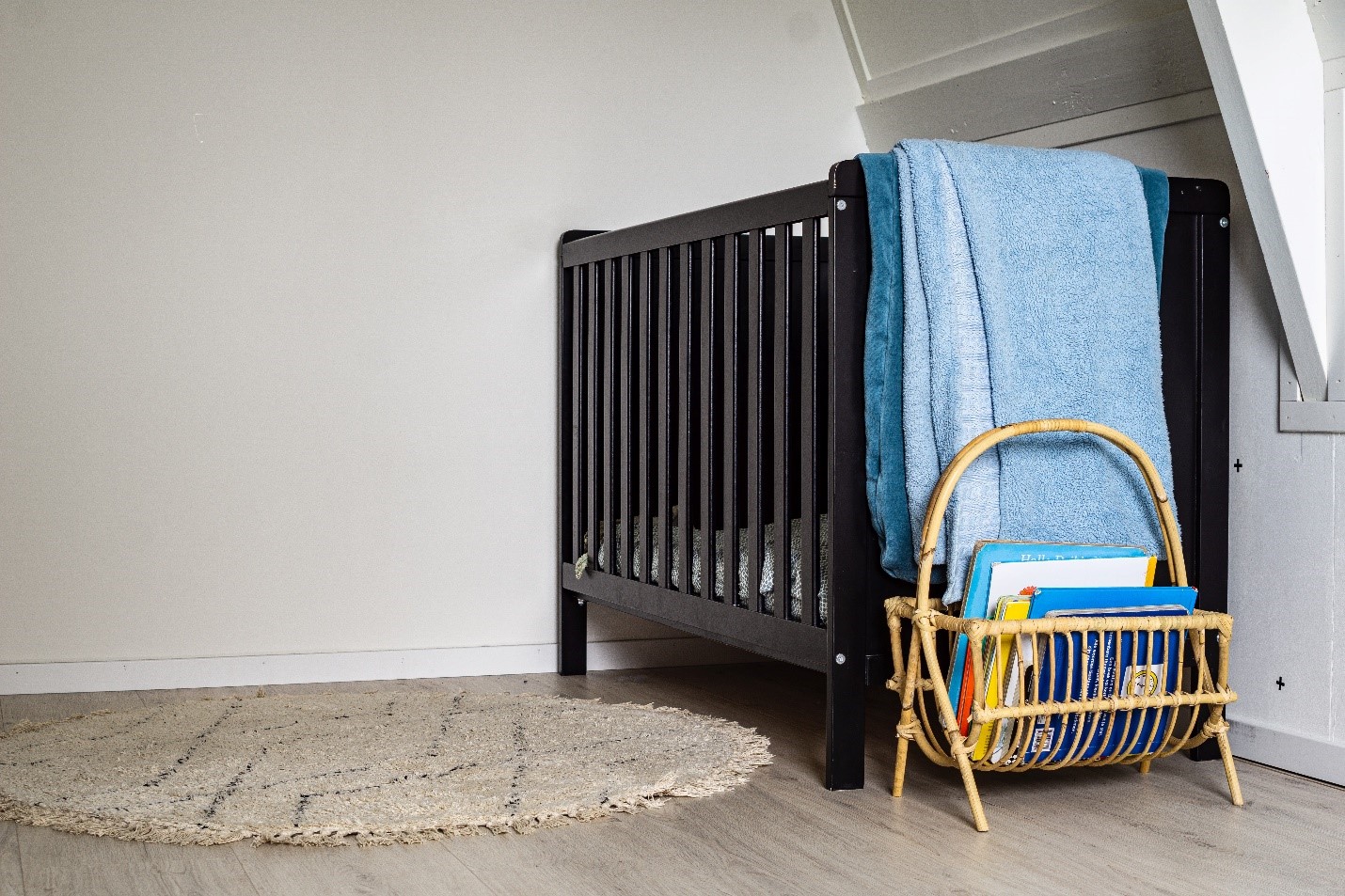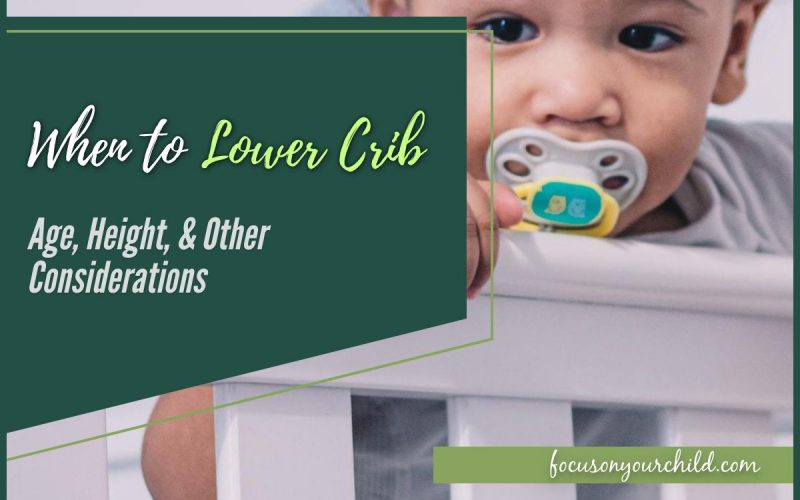Cribs are an essential part of your baby’s safety. However, new parents may be surprised to know that they have to adjust the height of the crib as time goes by. When you are thinking about lowering the crib height of your baby, there are many questions that come to mind. When should this be done? What considerations have to be taken into account before doing so?
Cribs should ultimately be lowered depending on the baby’s ability to move around. While they are newly born, you can put the crib to the highest setting for ease. However, begin lowering the crib when they can move around and sit up on their own. Have the crib at the lowest setting when they can pull themselves up by holding the railings. You can also consider age and height when deciding to lower the crib.
This article will detail all the factors that should be considered when lowering a baby’s crib, as well as choosing a safe crib for your baby.
Why Adjust the Crib’s Height?

Cribs are one of the most important things new parents have to get for their baby. Since the baby is almost always inside of it, parents should make sure that their safety is never compromised.
A study by the American Association of Pediatrics found that of the 180,000 injuries recorded between 1990-2008, over 80% of them involved cribs. The vast majority of those injuries were attributed as a result of falling.
Going back to the question, the major reason for adjusting a crib’s height is the baby’s safety. In the very beginning, cribs are set to the highest setting so that it is easier for parents to come and pick up and set their baby inside. This is only viable for newborns as they don’t move as much yet.
However, cribs should begin to lower as time goes by, specifically when the baby begins to learn how to move around. Lowering the crib lowers their risk of injury in the unfortunate event of a fall.
When to Lower the Crib’s Height?
There are different factors to consider when adjusting the crib’s height. However, most of them are associated with the baby’s ability to move.
Age
As mentioned before, newborns are too young to move around much. This is why they should sleep in the highest position of the crib for their safety, as well as because it makes parents’ lives easier since they can pick them up more effortlessly.
However, older babies have enough strength and coordination that it might be safer for you to lower their crib down a bit so that there’s less risk involved when they start to move around. This is especially the case if their cribs are in a fixed position inside of the room since babies can easily climb out and fall off onto the hard floor below.
The general consensus is to lower the crib’s height when your baby reaches an age between five and eight months. The reason for this specific time frame is because it marks a point when babies can move around and even sit up on their own.
Once the baby can pull themselves up by the crib’s railings, then it is time to lower the crib all the way to the lowest setting. This usually happens between nine and twelve months. When babies are mobile enough to pull themselves up, that is the time to be most concerned of accidents and falls.
Mobility
You don’t have to base your decision on age if you use your baby’s mobility to decide whether it is time to lower the crib or not.
If they can move around on their own, even sit up straight by themselves, then it may be time to lower the crib to the middle setting. It is best to lower the crib when they are able to sit up by themselves because this enhances their ability to climb out of it. If they can’t, then it may be safer to leave the crib at its highest setting.
Once the baby can stand up against the railings, then it may be time to lower the crib to the lowest setting. There is a higher risk of injury once they can pull themselves up onto their feet, so lowering the crib can help prevent accidents and falls.
Even if your baby hasn’t been able to pull themselves up yet to stand, it is still a good idea to lower the crib to the lowest setting if you feel that they are learning to do so. Lowering the crib keeps them safe and allows them to practice standing up on their own.
Height

The height that you should have your baby’s crib lowered down can also depend on how tall your child is at that time. For example, if your baby is not even able to sit up yet on their own but is already quite tall for being four months old, then it may be time to lower the crib down.
On the other hand, if they are short and still have trouble sitting up by themselves without falling over or tumbling onto their mattresses because of their short height, then it may be best to leave the crib at its highest setting.
Height is a concern because the probability of a child falling from a crib is associated with their ability to go over the rails. Unfortunately, taller children can get over the rails easier than shorter ones.
Again, age is not always the most reliable indicator of when to lower the crib. A better way to determine it is by how tall your baby is and whether they seem ready for a change in their sleeping environment.
How to Choose a Safe Crib?
It is common for other people to offer their old cribs for new parents to use. Although it is a generous gesture, there are factors to consider when making sure that cribs are safe for babies. While old cribs have a wonderful vintage look, newer cribs are usually designed with stricter safety policies.
Here are other factors to consider when choosing a safe crib:
Adjustable Height
If you are planning on adjusting the height of the crib, then make sure that the crib itself is adjustable. Cribs with fixed heights might be hard to use as they can’t adapt to your baby’s changing needs. A crib made of metal or wood should also have rails at multiple levels so that parents will always find a suitable height for them and their children.
Narrow Slats

Parents should also pay attention to the slats on a crib. Most newer models have narrower spaces between their bars so that they won’t be able to get stuck with any of their limbs or body parts when trying to climb out. A good rule of thumb is to have the slats at most six centimeters apart. This distance should be more than enough to prevent the baby’s head from going through.
Non-Toxic Paint and Varnish
Parents should also make sure that the paint and varnish on a crib are non-toxic. This isn’t just to avoid poisoning, but it might cause allergic reactions as well when babies start chewing their cribs or rubbing them with their hands.
No Corner Posts
Another thing to consider is that corner posts are not allowed in cribs. This might be a safety risk, especially when babies start pulling themselves up and try to climb out of the crib by grabbing onto any surface they can get their hands on.
No Headboard and Footboard Cutouts
Parents should also avoid cribs with headboard and footboard cutouts. These can be hazardous since babies might get caught in between the gaps of both parts while climbing out or getting stuck inside.
Appropriate Mattress
There should also be a mattress that is appropriate for the crib. If it does not fit properly, then it may lead to gaps and spaces between its bars which can pose as another risk factor when babies start crawling or climbing out of their beds.
A common test done is the two-finger test. If two fingers can fit between the crib and the mattress, then you should probably get a slightly bigger mattress. Not only can the gaps be dangerous for babies to stick their hands into, but a loose-fitting mattress is also less stable – making it dangerous for babies that are learning to stand on their own.
No Drop-Side Rails
Lastly, parents should avoid cribs with drop-side rails. These parts are actually designed to allow parents easy access when they need to put their babies in or take them out of the bed while sleeping. However, it has been found to be a safety hazard for children.
It has actually been illegal to use cribs with drop-side rails since 2011. Although you cannot buy these today, you might have someone offer their old crib that features a drop-side rail.
Final Thoughts
In the end, it is a good idea to lower your baby’s crib as they grow older and become more mobile. Age may not be the best indicator of when this should happen because some children develop faster than others. Use their mobility and height as an indicator for whether you should change the height setting so that it will better suit them.
There are many other factors to consider when choosing a safe crib for your baby, but the ones mentioned above should be enough. You can always read more about different styles and brands of cribs as well as their safety ratings on reliable sites online such as Consumer Reports. There are also other alternatives to cribs.
